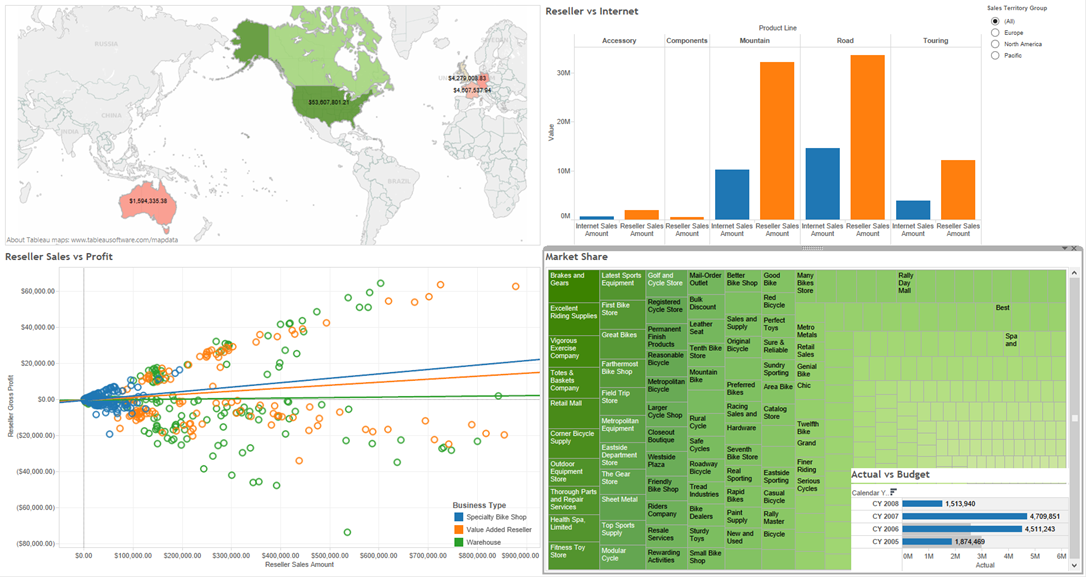Best Visualization Tool for Dashboards?
More and more organizations are planning and adopting dashboards. And, the question “which visualization tool is the best for dashboarding?” has been asked more frequently. The visualization aspect of BI has been rapidly evolving. There are plenty of vendors and plethora of tools out there. And, they keep on leap-frogging each other and each one has its strong sides and limitations. More than likely, the darlings of today will be forgotten in a few years. So, a quest to find the perfect tool that does it all is likely to fail or it will be short-lived.
I’m not a visualization expert. When it comes to visualizations, I listen to guidance from experts. If you navigate to slide 30 of my “Best Practices for Implementing Enterprise BI Solution”, you’ll see a mockup of a sales dashboard by Stephen Few that is taken from his excellent “Information Dashboard Design” book. This is an example of a pixel-perfect layout with a lot of customizations, such as conditional formatting. No fancy gauges, no bouncing needles, the focus is on intuitive interpretation of data and not on the visualization fluff. If you decide to adopt such visualization standards, you probably already own a great tool for implementing dashboards – SQL Server Reporting Services – which supports bullet graphs, sparklines, as well as a high level of customization.
So, instead of investing in a myriad of tools and hoping that they will solve your BI challenges, my advice would be to spend your money on a solid architecture that would easily allow you to support multiple visualization tools and swap tools as new ones come on board. For example, if you like and decide to adopt Tableau for interactive data visualization and exploration, you’ll find that integrates nicely with SSAS. Here is a dashboard that was done without asking end users to take care of the data logistics and business calculations since this work has already been taken care of in the backend layer. You could also easily implement a similar interactive dashboard with Power View which might not have all visualizations that third-party tools now have but gains in other areas. Please don’t take this dashboard as a best practice, it was meant to only show the possibility of tool integration.

But you don’t have time and budget for beautiful architectures, right? Since you don’t get much help on the IT side of things (if you have IT at all), you want to delegate BI and let Business to take things in their own hands. However, no matter what visualization vendors would tell you, soon or later you’ll find that self-service BI still requires a proper foundation, as Key Unkroth explains nicely in his “Self-Service Business Intelligence Governance” presentation. At minimum, a department would need some sort of data repository that integrates and cleans the data before letting end users in. But if you’ve gone that far, before implementing dashboards, why not add a semantic layer that centralizes business logic and it’s supported by most popular visualization tools out there?




